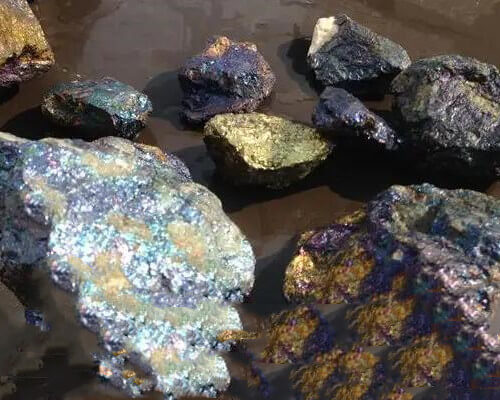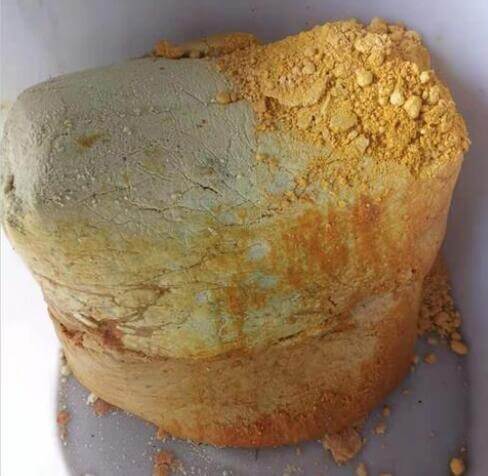Copper-sulfur Separation Technology
1. Lime Method
Lime is a common inhibitor of pyrite. When using the lime method for copper-sulfur separation, the pH value of the pulp or the free CaO content in the pulp can significantly affect the separation effect. The general rule is that a pH value of about nine can float copper and suppress sulfur when dealing with dense iron ore with a large amount of pyrite and disseminated ore with less pyrite.
2. Lime + Cyanide Method
For pyrite with high planktonic activity, it is effective to use lime and cyanide to inhibit it. However, because cyanide is highly toxic and pollutes the environment, people try to replace it with other methods, such as lime and sulfurous acid.
3. Lime + Sulfite Method
This method is a widely used cyanide-free method for inhibiting pyrite. For copper-sulfur ore with high sulfur content, high mud content, or pyrite plankton activity, which is difficult to be inhibited by lime, lime and sulfurous acid (or SO2) can be used to inhibit pyrite for copper-sulfur separation. It’s the key to accord the ore properties to control the appropriate pulp’s pH value and the amount of sulfurous acid (SO2) and pay attention to the appropriate aeration strengthening and stirring. All are the key. Some experimental studies have pointed out that in the weakly acidic medium of pH=6.5~7, the lime and sulfurous acid method is more effective in inhibiting pyrite. Compared with the lime method, this method has the characteristics of stable operation, good copper index, and low consumption of activators such as sulfuric acid.
4. The Heating Oxidation Method
It can use this method for the more difficult copper-sulfur mixed concentrate. It can divide this method into steam heating methods with or without lime, accelerating the oxidation of the pyrite surface and inhibiting pyrite. For example, an excellent sorting effect is obtained by adding lime to adjust pH=11 and heating it to 60-70℃ with steam.

In copper-sulfur separation and flotation, some people have also researched lime and sodium humate and achieved remarkable sorting results. In addition, using a collector with good selectivity or a mixture of collectors can reduce the dosage of inhibitors and activators and operate stably. For example, a concentrator uses a mixture of butyl xanthate, butylamine black medicine, butyl xanthate, and OSN-43, which greatly improves the copper concentrate grade and recovery rate.
When the inhibited pyrite is activated, in order to save the number of activators such as sulfuric acid, copper sulfate, sodium carbonate, or carbon dioxide gas, the floating copper tailings can be concentrated with a hydrocyclone to remove a part of the high alkalinity mud water, and then Add fresh water to dilute.
Copper sulfur ore flotation agent
Copper ore is a comprehensive deposit with various metals coexisting, and its beneficial components are complex. The existence of lean ore and miscellaneous copper ore undoubtedly increases the difficulty of beneficiation. And the difficulty of refining and producing concentrate is also increased. Excellent collectors can change and adjust the float-ability of minerals to a large extent, and improve the properties of air bubbles, thereby controlling mineral separation.
How special collectors can realize copper-sulfur separation and improve flotation recovery rate?
Generally speaking, preferential flotation, mixed separation flotation, and semi-preferential mixed separation are the common methods for the flotation of copper sulfide ores. Still, no matter which process is used, copper and sulfur separation is a problem. The principle of separation is generally to suppress sulfur by floating copper, that is, suppress pyrite. Selective collectors and the unique process of the “mixing method” can reduce the dosage of inhibitors and activators and improve the recovery rate of copper sulfide concentrate.
To a certain extent, the essence of the flotation of copper sulfide ore is to achieve the separation of copper sulfide and iron sulfide. Whether it is acidic, neutral, or weakly alkaline pulp, xanthate is an ideal collector for pyrite. Pyrite treated with sulfuric acid and hydrochloric acid has good float-ability (when using xanthate, pH=4.5 is optimal). In weakly alkaline pulp with pH=7~8, using xanthate as a collector is also one of the main ways to achieve better results in the industrial economy. In contrast, the collecting ability of black medicine is much weaker than that of xanthate.
The sulfur content of pyrrhotite (Fe5S6~Fe16S17) is much lower than that of pyrite, and it is easy to oxidize and sludge and is a relatively hard-to-float iron sulfide mineral. For flotation of pyrrhotite, regardless of whether the pulp is acidic or alkaline, it should be activated with Cu2+ ions or a small amount of sodium sulfide and then collected with high-grade xanthate.
A certain deposit is a pyrite-type polymetallic deposit in the metamorphic volcanic rock series. The ore types are relatively complex. Pyrite, chalcopyrite, chalcocite, and sphalerite are the main metal minerals. And the pyrite content accounts for more than 85%. The main gangue minerals are quartz, chlorite, and sericite, the embedded grain size is between 0.1 to 0.5mm, and some are densely symbiotic with chalcopyrite.
The massive copper-bearing pyrite is continuously ground to 80%-0.074mm in two steps and then subjected to flotation (one coarse, one sweep, and three fine), and lime is used as a pyrite inhibitor. Under the condition of high alkalinity, copper is floated with butyl xanthate and terpineol oil, and the tailings are sulfur concentrate.
When treating disseminated copper sulfide ore and massive copper-bearing pyrite simultaneously, the “mixing method” can be used. That is, from the disseminated type, under low alkalinity (containing free Ca050~100g/m3) pulp. The copper-sulfur mixed concentrate is selected from the copper sulfide ore and added to the grinding operation of the lump ore. At this time, the pulp condition is a high alkalinity environment, and the copper-sulfur concentrate is separately floated through copper-sulfur separation. From the analysis of the process effect, its essence is branching and serial flow. And the main features are simple processes, convenient operation, drug saving, and an excellent recovery rate.
How does xanthate control the floatability of refractory copper sulfide ore and improve the recovery rate?
Among the copper sulfur ore flotation agents, xanthate, as an anionic collector, has excellent collection performance.

Concerning constituent elements, xanthate is mainly composed of alcohol, sodium hydroxide, and carbon disulfide. It is a light yellow powder, easily soluble in water, has a pungent odor, and has specific toxicity. It roughly divides xanthate into 11 different agents. Ethyl yellow Medicinal and butyl xanthate are the most commonly used.
The xanthate with carbon atoms less than or equal to 2 in the base is “low-grade xanthate.” The xanthate with a carbon number greater than two is called “high-grade xanthate.” The xanthogen in xanthate is a weak acid, which is easy to decompose—the lower the pH value, the faster the decomposition speed. Heat can quickly deteriorate xanthate, and the higher the temperature, the quicker the decomposition. Xanthate itself is also a reducing agent, which is easily oxidized.
In terms of flotation mechanism, the most commonly used collector for flotation chalcopyrite is xanthate, and high-grade xanthate is suitable for flotation of hard-to-float copper-sulfur ore. Ethyl xanthate belongs to low-grade xanthate. Although the selectivity is good, it is beneficial to improve the concentrate grade, but the control of the recovery rate is relatively poor. At the same time, butyl xanthate belongs to high-grade xanthate, which can significantly improve the metal recovery rate. However, the selectivity is relatively weak due to the strong collecting ability, affecting the concentration grade.
In industrial production or the operation of the mineral processing plant, to adapt to the unevenness of the mineral surface and improve its selectivity in production, xanthates with different carbon chain lengths are often mixed to obtain a better quality Effect.
